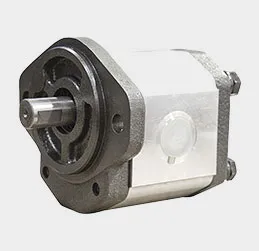Innovative Techniques for Aluminum Sheet Metal Stamping in Modern Manufacturing
Aluminum Sheet Metal Stamping An Overview
Aluminum sheet metal stamping has become an essential process in various manufacturing industries due to its versatility, lightweight properties, and ability to provide high strength. The process involves shaping aluminum sheets into desired forms using various methods, primarily with the application of force from press machines. This article will explore the techniques, advantages, applications, and future trends associated with aluminum sheet metal stamping.
Understanding the Stamping Process
Stamping is a method of shaping metal by applying a large amount of pressure to the material, typically using a die and punch. When it comes to aluminum sheets, the process starts with the selection of the appropriate aluminum alloy, which is crucial for achieving the desired properties in the final product. Common aluminum alloys used in stamping include 1100, 3003, 5052, and 6061, each offering various characteristics such as corrosion resistance, formability, and strength.
The stamping process consists of several steps blanking, piercing, bending, and forming. First, blanking involves cutting the aluminum sheet into specific shapes or sizes. Next, piercing creates holes or cutouts in the material, essential for later assembly stages. Bending allows for the formation of parts that require angular or curved edges, while forming shapes the material into three-dimensional components.
Advantages of Aluminum Stamping
One of the key advantages of aluminum sheet metal stamping is its lightweight nature. Aluminum is significantly lighter than steel, making it highly desirable in industries where weight reduction is critical, such as automotive and aerospace. Lightweight components contribute to improved fuel efficiency and performance, leading to increased demand for aluminum stamped parts.
Another advantage is the excellent strength-to-weight ratio of aluminum. When treated and processed correctly, aluminum can achieve significant strength while maintaining low weight. Additionally, aluminum is resistant to corrosion, making it ideal for applications exposed to harsh environmental conditions.
The stamping process is also highly efficient and repeatable, allowing manufacturers to produce large quantities of parts with consistent quality. Modern stamping machines are equipped with advanced technology, enabling faster production cycles and reduced lead times, making it an attractive option for manufacturers aiming to meet high-volume demands.
aluminum sheet metal stamping

Applications of Aluminum Sheet Metal Stamping
Aluminum sheet metal stamping finds applications in various industries. In the automotive sector, stamped aluminum parts contribute to lightweight vehicle designs, enhancing fuel efficiency and overall performance. Components such as chassis parts, brackets, and housing panels are commonly produced through this process.
In the aerospace industry, the need for lightweight yet strong materials is paramount. Stamped aluminum components are used in aircraft frames, panels, and other essential parts, helping manufacturers create more efficient and safer aircraft.
Additionally, the consumer electronics sector utilizes aluminum stamping for products like smartphones, laptops, and appliances. The aesthetic appeal of aluminum, combined with its functional properties, makes it a popular choice for high-tech devices that require both durability and design.
Future Trends in Aluminum Stamping
As industries continue to seek innovative ways to improve performance and efficiency, the demand for aluminum sheet metal stamping is expected to grow. The advancement of technologies such as automation, robotics, and additive manufacturing will play a crucial role in enhancing the stamping process. Automation streamlines production lines, reducing human error and increasing output, while additive manufacturing allows for the creation of complex shapes that may not be feasible with traditional stamping methods.
Moreover, the emphasis on sustainability and eco-friendly manufacturing processes is likely to influence future trends in aluminum stamping. Recyclability and the use of sustainable materials will become increasingly important, aligning with global efforts to reduce waste and carbon footprints.
Conclusion
In conclusion, aluminum sheet metal stamping is a vital manufacturing process that offers numerous benefits, from lightweight and durable components to cost-effective production methods. As technology continues to advance and industries evolve, the significance of stamped aluminum parts will remain substantial, driving innovation and efficiency across various sectors.
-
Precision Sheet Metal Stamping Manufacturer | Fast & ReliableNewsAug.01,2025
-
OEM Sand Cast Pump Valve Fittings - Baoding Hairun Machinery And Equipment Trading Co., Ltd.NewsAug.01,2025
-
Custom OEM Impellers | High Efficiency & PrecisionNewsAug.01,2025
-
OEM Sand Cast Pump Valve Fittings - Baoding Hairun Machinery | Customization, Quality AssuranceNewsAug.01,2025
-
OEM Sand Cast Pump Valve Fittings - Baoding Hairun Machinery And Equipment Trading Co., Ltd.NewsAug.01,2025
-
OEM Sand Cast Pump Valve Fittings - Baoding Hairun Machinery And Equipment Trading Co., Ltd.NewsJul.31,2025















